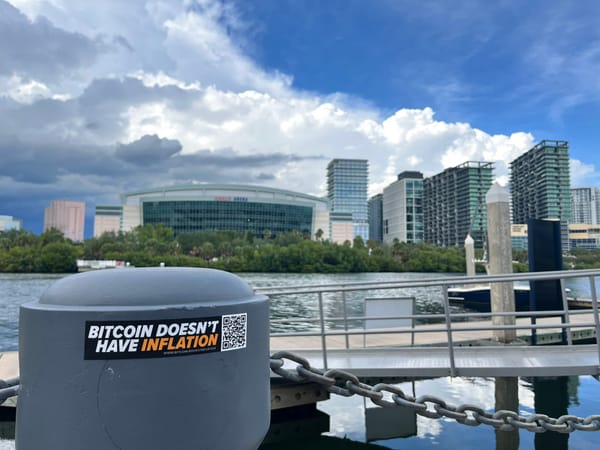Tampa Flag Design Document
A designer's guide to capturing Tampa's soul in its new civic symbol.
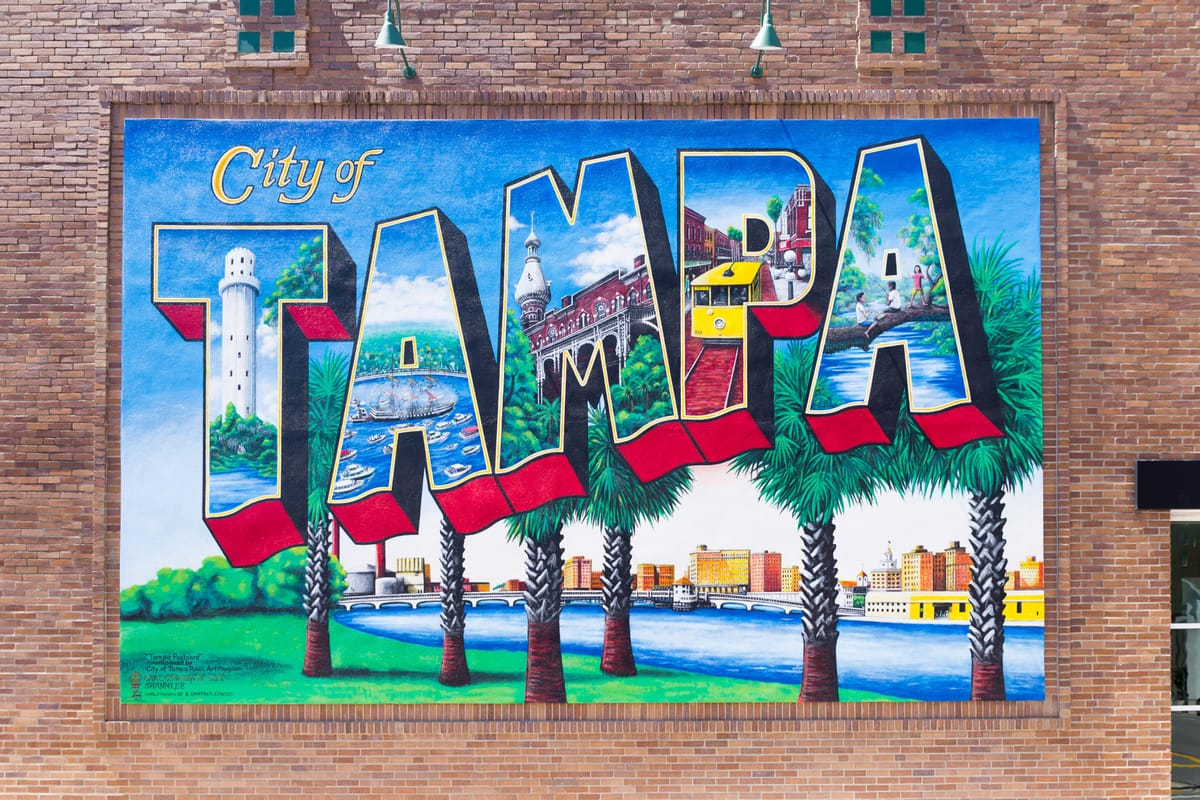
The Power of a City Flag
A city flag is far more than a piece of cloth flying above government buildings – it is the visual soul of a city's identity. When done right, a city flag becomes woven into the very fabric of urban life, transforming from a mere symbol into a shared language of civic pride.
Chicago's flag stands as perhaps the most powerful example of this transformation. Its four red stars and blue stripes have transcended their original design to become the city's universal emblem. The flag's impact runs so deep that Chicago's police officers and firefighters often choose to be buried wrapped in the city flag rather than the American flag – a testament to the profound connection between civil servants and their city's symbol. The design appears everywhere: tattooed on residents' arms, painted on buildings, printed on clothing, and integrated into business logos. It's not just a flag; it's Chicago's visual signature.
Amsterdam offers another striking example of how a city flag can permeate urban identity. The city's distinctive triple-X design (technically three St. Andrew's Crosses) appears far beyond traditional flag displays. It's embedded in the city's infrastructure – cast into manhole covers, mounted on poles that protect sidewalks from vehicles, and incorporated into public art throughout the city. The symbol has become an integral part of Amsterdam's visual language, instantly recognizable and deeply meaningful to residents and visitors alike.
These examples demonstrate how a well-designed city flag can transform into something greater than its original purpose. It becomes a unifying symbol, a source of pride, and a shared vocabulary for expressing connection to place. When citizens embrace their flag, they embrace their community – not just as a location, but as a part of their identity.
The Need for Change
Tampa's current flag, adopted in 1930, speaks to events that predate the city itself. It commemorates Florida's changing ownership through colonial powers - Spain's exploration (1528), England's purchase (1763), and the United States' acquisition (1821). Yet Tampa wasn't officially recognized until 1887. The current flag tells the story of Florida's colonial period rather than Tampa's own journey and identity.
Modern Tampa deserves a symbol that captures its unique character - not as a colonial possession, but as a dynamic city that has forged its own destiny through industry, culture, and natural advantage.
A City Transformed: The New Tampa
For most of its history, Tampa wore a different face. It was known primarily as a port city, its identity anchored in blue-collar industry and maritime commerce. Downtown areas sat eerily quiet after business hours, and Water Street was a forgotten corridor rather than a destination. The city carried a reputation shaped by its strip clubs, organized crime history, and industrial grit. It was seen as a fly-over city – a place to pass through rather than a place to stay.
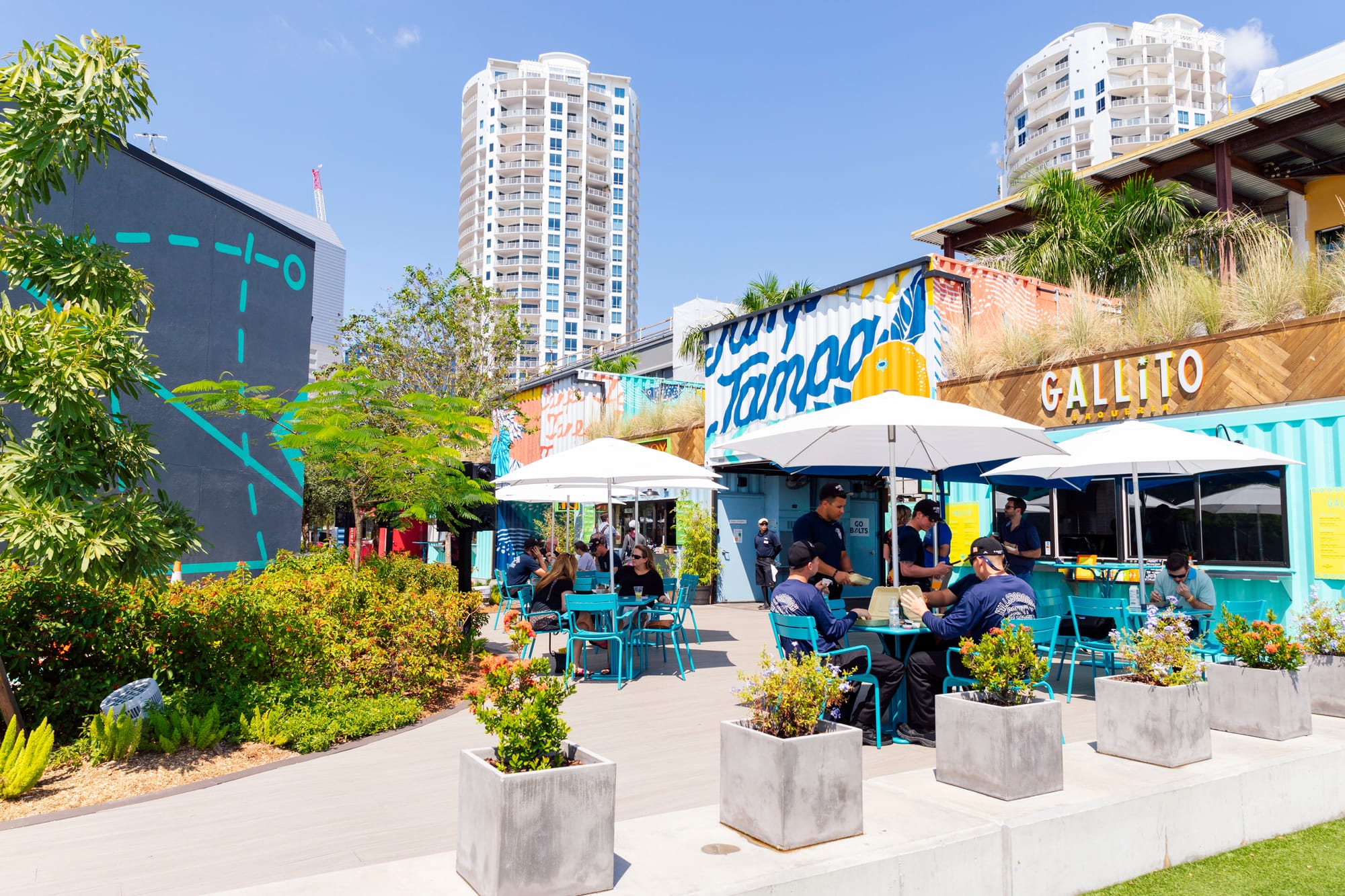
Today's Tampa pulses with new energy. Skyscrapers reach skyward, with half a dozen more planned in the immediate future, each one a testament to the city's growing ambitions. The tech sector flourishes where vacant lots once stood, while startup incubators and co-working spaces breed innovation in former industrial spaces.
Young professionals are flocking to Tampa, drawn by more than just job opportunities. They're attracted to a lifestyle that combines career potential with quality of life. The city has cultivated a culture of health and vitality – morning runs along the Riverwalk, outdoor yoga classes, and water sports have replaced the stereotypes of Tampa's grittier past.
A City United
Perhaps no symbol better represents Tampa's unique ability to forge unity from diversity than the Tampa Bay Lightning. In a city where transplants from across the nation bring their loyalties to different football, baseball, and basketball teams, something remarkable happens when the Lightning take the ice. Whether you're a former New Yorker, a Midwest transplant, or a Florida native, Thunder Alley becomes a place where regional differences dissolve into a sea of Tampa Bay blue.
This phenomenon captures the essence of modern Tampa – a city that doesn't demand newcomers abandon their past, but offers them something new to embrace together. Just as the Lightning unite lifelong hockey fans with Sun Belt converts, Tampa itself has become a place where diverse backgrounds and experiences merge into a shared identity, where "from somewhere else" transforms into "proud to be here now."
Essential Elements of Tampa's Identity
Striking Nature
Tampa holds a distinctive natural identity as America's lightning capital, where meteorological forces create an unmatched concentration of electrical storms. This natural phenomenon has become deeply woven into the city's character, manifesting both in nature and culture. The skies above Tampa light up with more strikes per square mile than anywhere else in the United States, creating a spectacular display of natural power that defines the region's atmosphere.
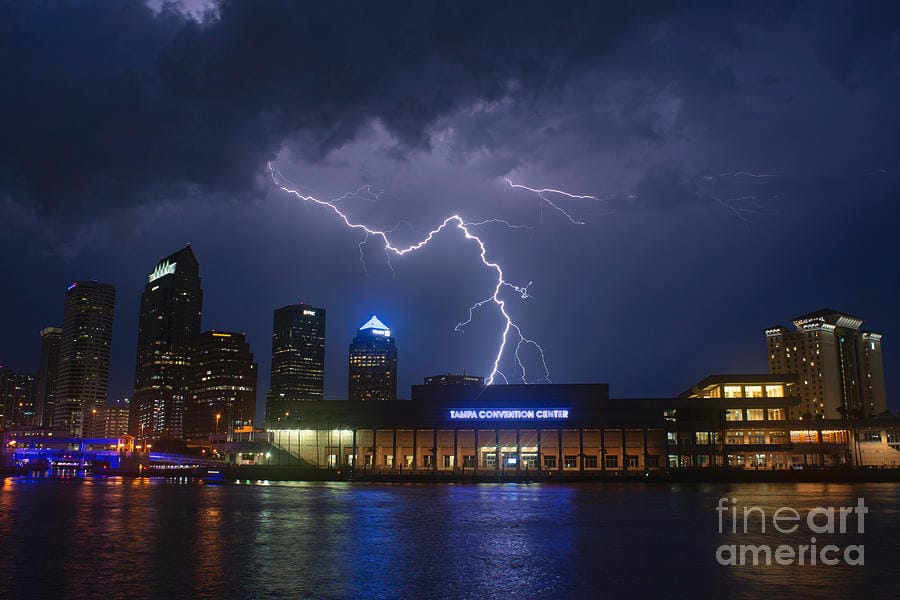
This electric identity found its perfect expression in the Tampa Bay Lightning, the city's NHL team that has become a symbol of Tampa's excellence and competitive spirit. The Lightning's three Stanley Cup championships (2004, 2020, 2021) have reinforced Tampa's association with power and energy, while fostering intense civic pride. The team's success has transformed Tampa into a passionate hockey city, proving that the lightning in Tampa's identity strikes both from the sky and on the ice. On game nights, Amalie Arena in downtown Tampa becomes the epicenter of this energy, where natural phenomenon and sporting excellence merge into a singular expression of Tampa's dynamic character.
Maritime Heritage
Tampa's story is inseparable from its waters. The natural harbor of Tampa Bay has shaped the city's destiny from its earliest days. Spanish explorers first sought mythical riches here, but found instead a perfect natural port that would eventually help build a great city. This maritime heritage lives on not just in the busy modern port, but in Tampa's enduring celebration of its nautical history through traditions like Gasparilla, which draws over half a million visitors annually to celebrate the city's connection to maritime lore.
Tampa's Three Foundational Forces
The Port: Gateway to Global Commerce
Port Tampa Bay stands as more than just a maritime facility – it represents Tampa's enduring role as a nexus of global trade and commerce. As Florida's largest port by both land and cargo tonnage, it serves as the economic engine of West Central Florida, pulsing with activity that connects the region to the world.
The port's significance extends far beyond its physical presence. As the world's primary phosphorus shipping point, it demonstrates Tampa's crucial role in global agriculture and industry. This distinction isn't just about trade volume – it represents Tampa's ability to become indispensable to global commerce in unexpected ways.
Strategically positioned along the Interstate-4 Corridor, the port serves one of America's fastest-growing regions, providing a vital supply chain artery for nearly half of Florida's population. Its role as an energy gateway, supplying 40% of Florida's energy needs, further cements its position as critical infrastructure for the entire state.
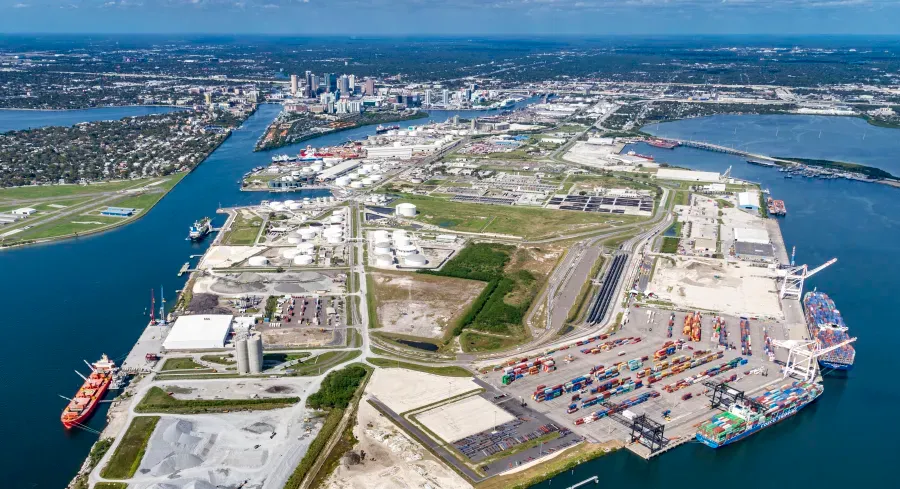
The port's evolution mirrors Tampa's own transformation. What began as a natural harbor that attracted Spanish explorers has grown into a modern marvel of logistics and commerce, earning an A+ rating from Fitch and ranking among America's top 30 ports. Yet it maintains its connection to Tampa's maritime heritage while driving its economic future.
Ybor City: Crucible of Culture and Liberty
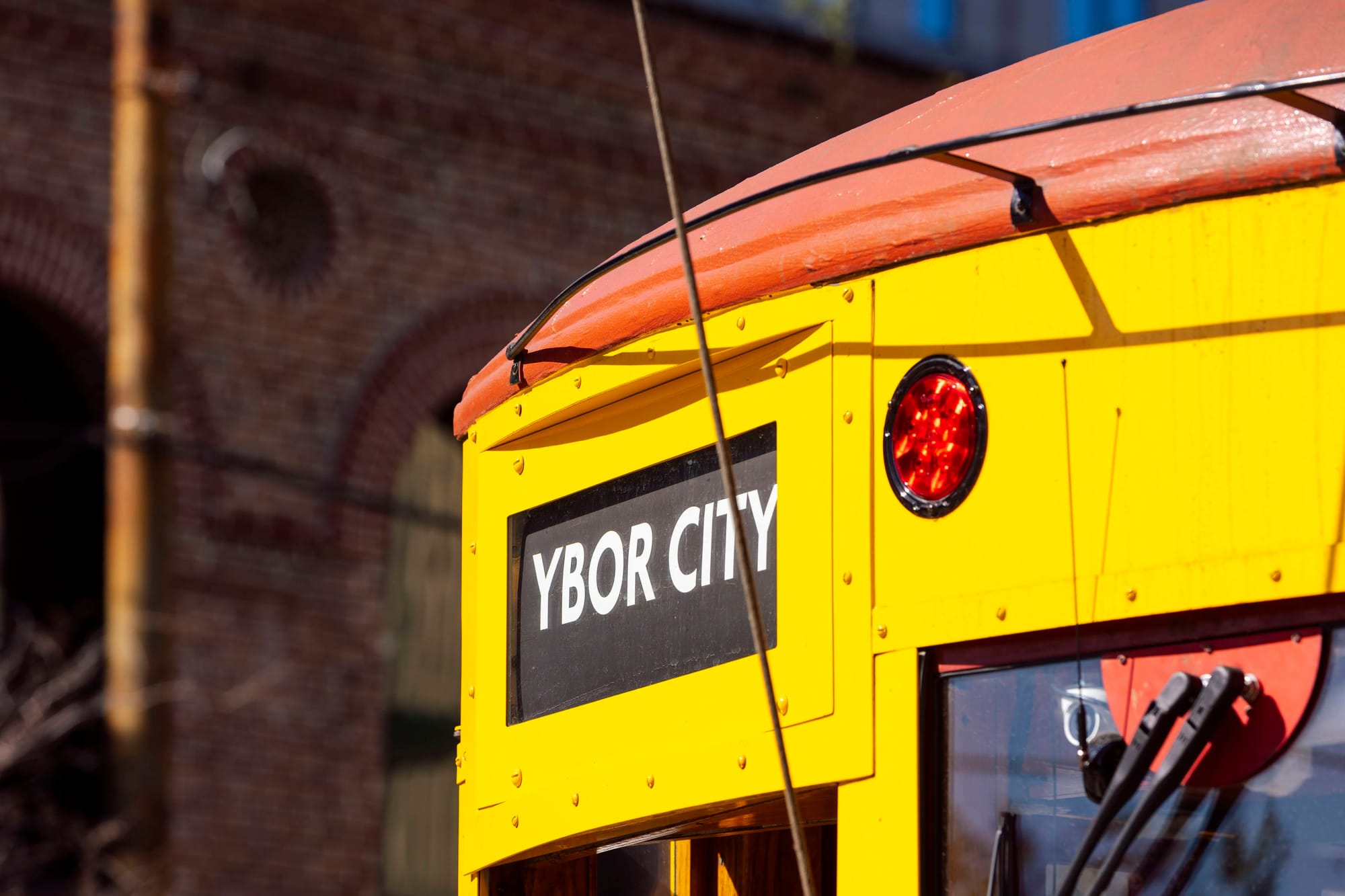
Ybor City represents more than just Tampa's cigar-making heritage – it stands as a testament to the power of industry to forge culture and catalyze change. As the "Cigar City," Tampa once produced millions of hand-rolled cigars daily, but the true product of this industry was a unique American community.
The district's story is one of entrepreneurship intertwined with revolution. Within these brick buildings, Cuban independence from Spain was planned alongside daily cigar production. Workers would listen to "lectores" (readers) share news and revolutionary ideas while they worked, making Ybor City not just a manufacturing center, but an intellectual and political crucible.
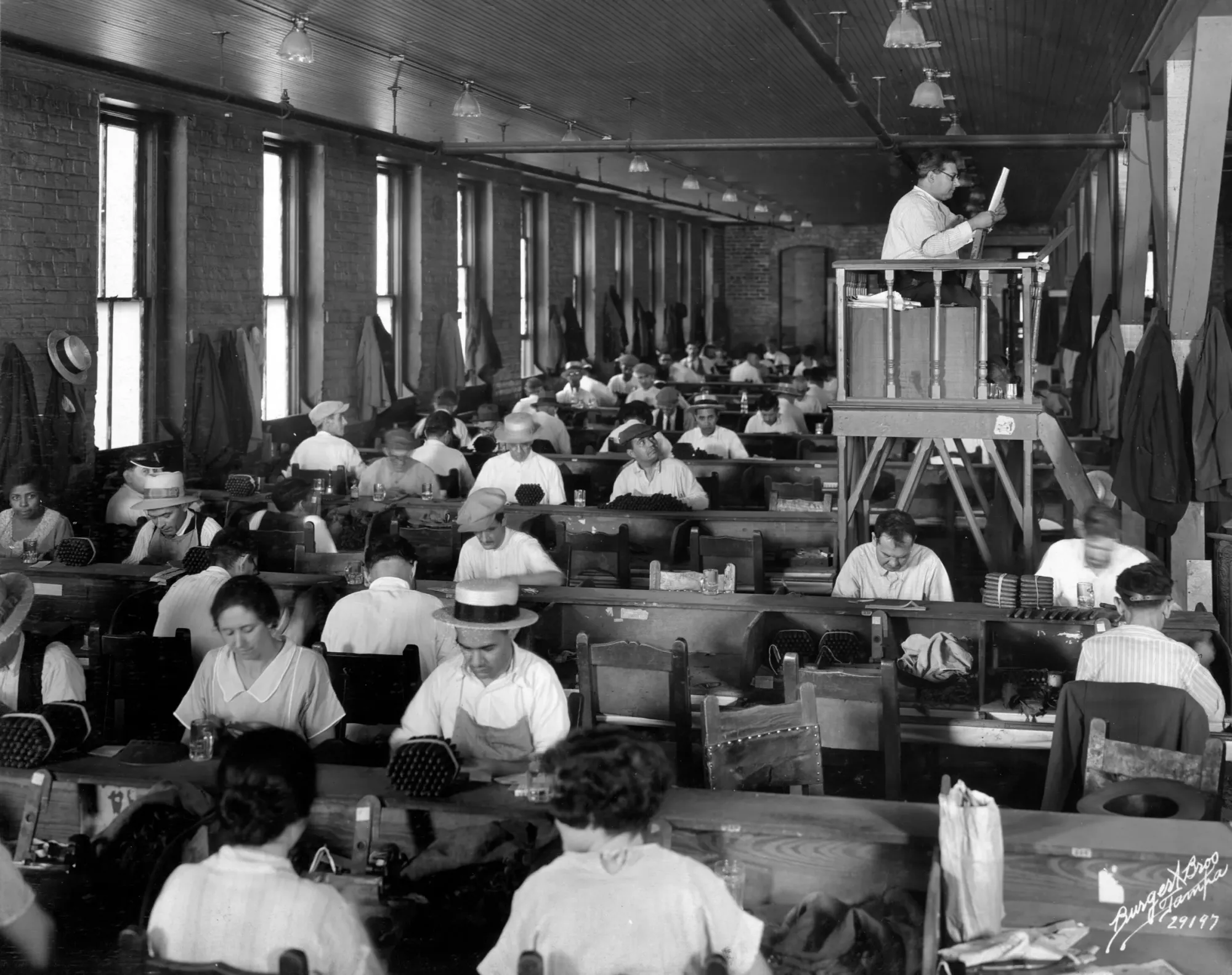
Even the district's darker history – the era of Charlie Wall and Santo Trafficante – speaks to Tampa's complex role in American history. While not a point of pride, this underground history demonstrates how Tampa has always been a city of significance beyond its official status, influencing events far beyond its borders.
Most importantly, Ybor City embodies the immigrant experience in America. Here, Spanish, Cuban, Italian, and German communities created their own social clubs, built their own infrastructure, and forged a unique cultural identity that transcended their origins. This heritage of cultural fusion and reinvention continues to influence Tampa's character today.
Military Presence: From Fort to Future

Tampa's military identity begins with Fort Brooke, whose cannons still stand guard at the University of Tampa, silent sentinels connecting past to present. But it's at MacDill Air Force Base where Tampa's military significance truly takes flight.
MacDill's unique position as home to two combatant commands – U.S. Central Command and U.S. Special Operations Command – places Tampa at the nexus of global military operations and strategy. This dual presence is unprecedented and represents extraordinary confidence in Tampa's role in national defense.
The base's impact extends beyond military operations. It brings international attention and diplomatic significance to Tampa, hosting military leaders from around the world. This international presence enriches Tampa's global perspective and reinforces its importance on the world stage.
Design Significance
These three forces – port, culture, and military – represent distinct yet interconnected aspects of Tampa's identity:
- The port represents Tampa's connection to the world and its role in global commerce
- Ybor City embodies Tampa's cultural diversity and spirit of revolution and reinvention
- MacDill symbolizes precision, strength, and global significance
Together, they tell the story of a city that has always been more than it appeared – a place where commerce meets culture, where tradition meets innovation, and where local identity connects to global significance. These elements provide rich inspiration for design that can capture both Tampa's historical depth and its contemporary relevance.
Pirates and Explorers: A Living Legacy
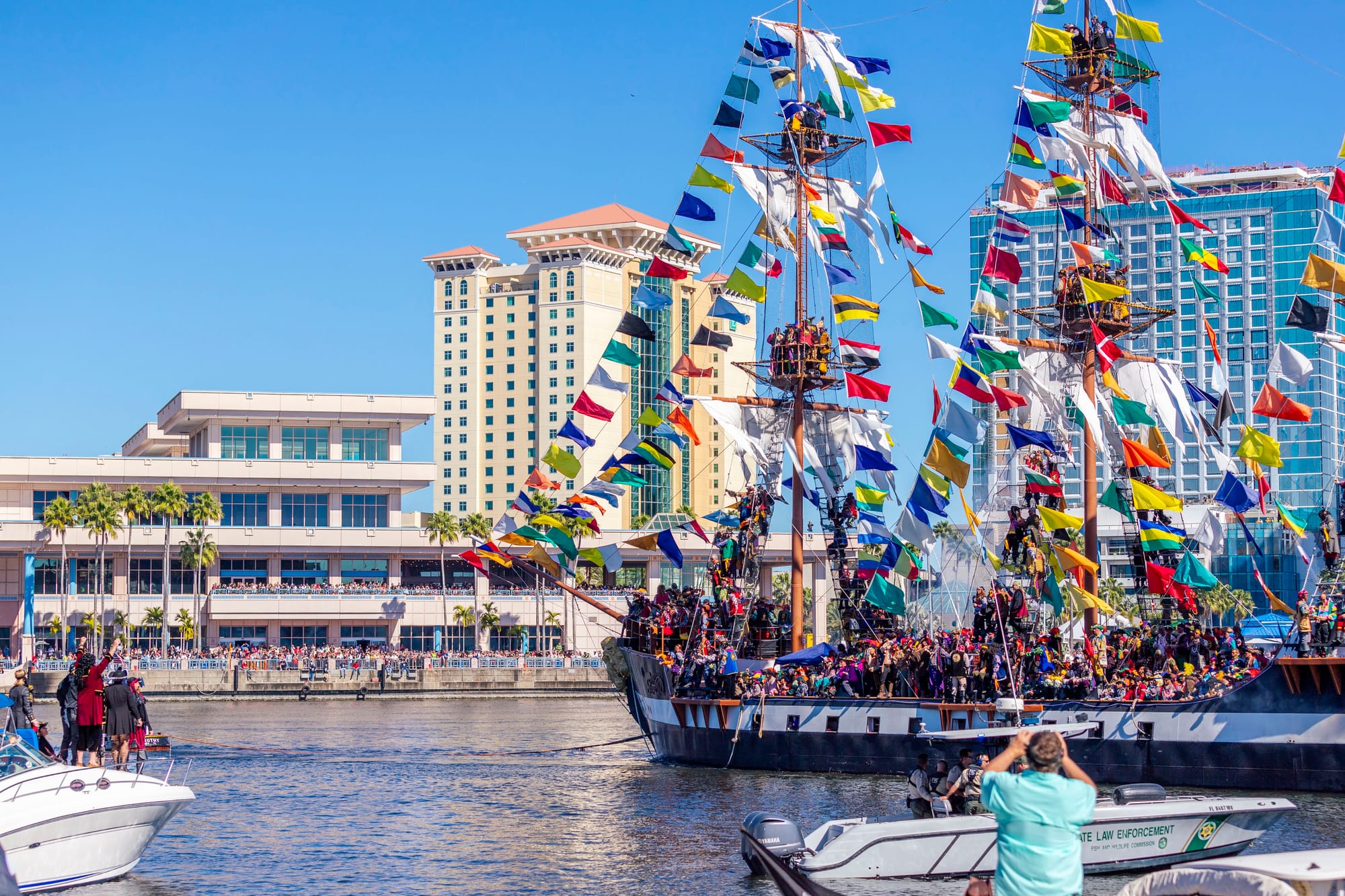
Tampa's identity is inextricably linked to its history of Spanish exploration and its continuing celebration of pirate culture. When Hernando de Soto ventured to find the Fountain of Youth, his journey led him to Tampa Bay, marking the beginning of Tampa's documented history. This era of exploration and adventure has evolved into a defining characteristic of the city's modern identity.
Today, Tampa embraces this swashbuckling heritage with unmatched enthusiasm. The annual Gasparilla Pirate Festival, ranking as the third-largest parade in the United States after Mardi Gras and the Macy's Thanksgiving Parade, transforms the city into a celebration of its maritime mythology. Drawing over half a million visitors annually, this festival represents more than just entertainment – it's a living connection to Tampa's seafaring past.
This pirate identity extends beyond celebration into the city's modern culture. The Tampa Bay Buccaneers, the city's NFL team, embody this spirit in professional sports, making the pirate identity a year-round presence in Tampa's cultural landscape. From the Spanish galleons that first explored Tampa Bay to the mock pirate ships of Gasparilla, this heritage represents Tampa's spirit of adventure, celebration, and community pride.
Architectural Language: Where History Meets Sky
Tampa's architecture tells the story of its evolution through a rich vocabulary of forms and styles. Each architectural era has left its mark, creating a visual language that could inspire civic design.
In Ybor City, Spanish-Cuban architecture speaks to the area's immigrant heritage. The district's distinctive brick buildings, with their ornate wrought-iron balconies and decorative cornices, reflect both industrial necessity and cultural pride. These weren't just factories and homes; they were statements of permanence by immigrant communities putting down roots in new soil. The social clubs built by various ethnic groups – Spanish, Italian, German – each added their own architectural accents, creating a harmonious blend of European influences adapted to Florida's climate and culture.
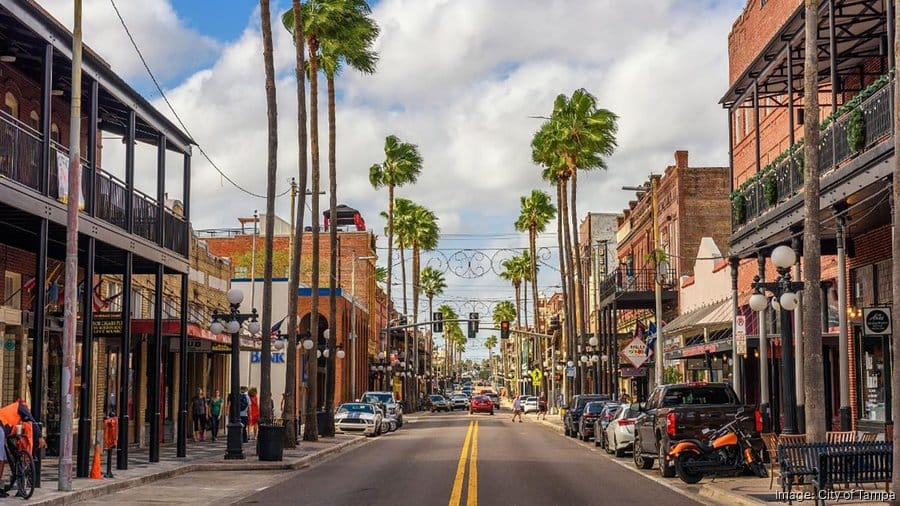
Rising above the city's skyline, the University of Tampa's Plant Hall stands as Tampa's most iconic architectural statement. Its Moorish Revival style, with its silvery minarets piercing the sky, represents Tampa's long-standing embrace of the exotic and ambitious. The building's distinctive silhouette has become shorthand for Tampa itself – a reminder that the city has never been afraid to stand out. The intricate horseshoe arches, sweeping verandas, and distinctive domes showcase a confidence in mixing cultural influences that remains relevant today.
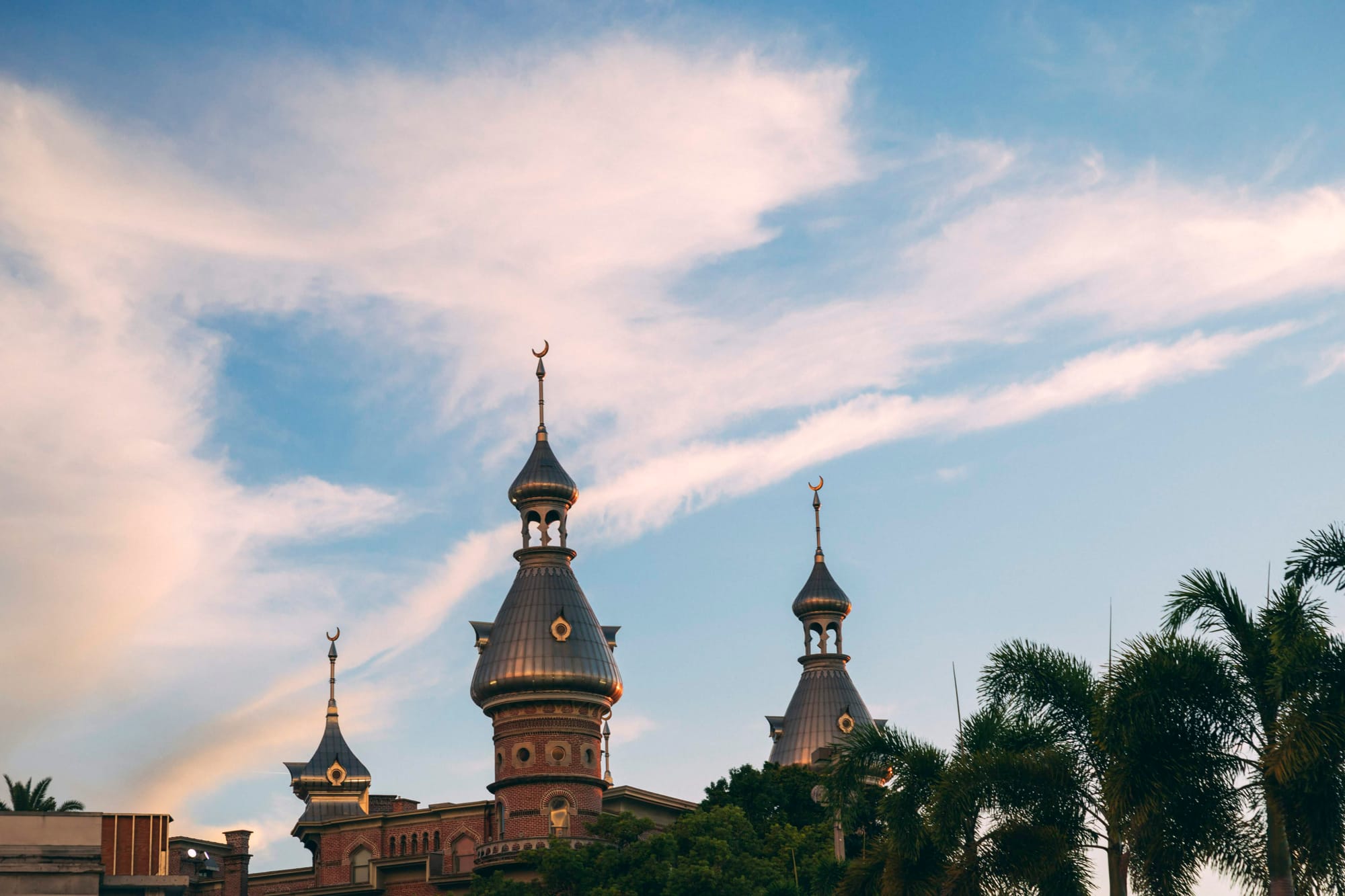
Even Tampa's military presence has contributed to its architectural vocabulary. MacDill Air Force Base's hangars and control towers embrace a different kind of design language – one of sleek efficiency and precision. The sharp angles of fighter jets and the sweeping curves of aircraft wings have become part of Tampa's visual identity, adding a modern counterpoint to the city's historical architecture.
This architectural heritage provides a rich palette of visual elements – from the geometric patterns of Spanish-Cuban ironwork to the soaring verticality of minarets, from the industrial honesty of brick warehouses to the aerodynamic forms of military aircraft. Each element speaks to a different aspect of Tampa's character: its multicultural roots, its ambitious spirit, its industrial strength, and its technological future.
Vision for Impact
This isn't just about creating a flag – it's about capturing Tampa's essence in a form that inspires pride and recognition. The design should represent not just what Tampa was or is, but what it is becoming: a city that has successfully reinvented itself while maintaining its authentic character. It should reflect both the grounded history of Tampa's industrial past and the soaring ambitions of its entrepreneurial future, while celebrating the unique way Tampa brings diverse people together under a shared identity.
Additional Resources
Visit Tampa Bay Logo Branding Kit - Logo colors for Visit Tampa Bay. Could provide cohesion with the city and the city's tourism branch.
City of Tampa Destination Guide - Highlighting restaurants and activities in Tampa.
Multicultural Guide - Provides interesting information on the history of Tampa.



